Universal body putty
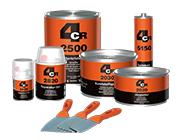
Universal body putty
-
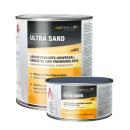 46400Bodyfiller Ultra sandSelf-levelling 1L
46400Bodyfiller Ultra sandSelf-levelling 1L -
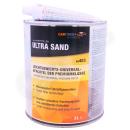 46403Bodyfiller Ultra sandSelf-levelling 3L
46403Bodyfiller Ultra sandSelf-levelling 3L -
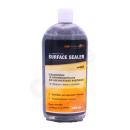 46440Pore seal putty1K Surface Sealer 500ml
46440Pore seal putty1K Surface Sealer 500ml -
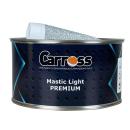 MLP1Putty LightPremium 1L
MLP1Putty LightPremium 1L -
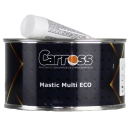 MME1.8Multi Eco PuttyUniversal 1.8kg
MME1.8Multi Eco PuttyUniversal 1.8kg -
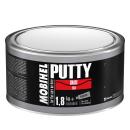 40090203Universal Soft PuttySMART Tec 1.8kg
40090203Universal Soft PuttySMART Tec 1.8kg -
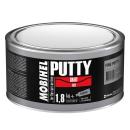 40090403Fine bodywork putty1.8kg
40090403Fine bodywork putty1.8kg -
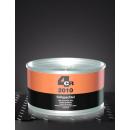 2010.XXXXPutty Fillergrey
2010.XXXXPutty Fillergrey -
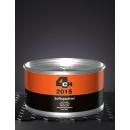 2015.1800Flexible PuttyBeige - 1.8kg tin
2015.1800Flexible PuttyBeige - 1.8kg tin -
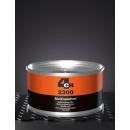 2300.XXXXMulti-purpose puttybeige
2300.XXXXMulti-purpose puttybeige -
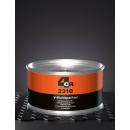 2310.2000Multi-Purpose PuttyBeige - 2kg tin
2310.2000Multi-Purpose PuttyBeige - 2kg tin -
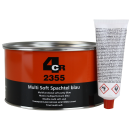 2355.1600Blue Puttyuniversal - 1.6kg
2355.1600Blue Puttyuniversal - 1.6kg -
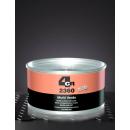 2360.1600Soft polyester puttygreen 1.6kg
2360.1600Soft polyester puttygreen 1.6kg -
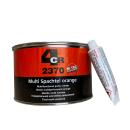 2370.1500Self-levelling PuttyOrange - 1,5Kg
2370.1500Self-levelling PuttyOrange - 1,5Kg -
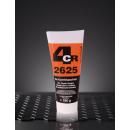 2625.0250Nitro-combined puttyGrey - 250g tube
2625.0250Nitro-combined puttyGrey - 250g tube
︾
Universal bodywork Putty: description & application
1. Polyester putty :
Polyester putty is a filler material used to level irregular surfaces, repair imperfections and fill small cracks or holes in the bodywork. Here are some of the characteristics of polyester putty:
Composition : Polyester putty is generally made up of polyester resins, mineral fillers and Hardeners. It hardens when mixed with a suitable hardener.
Application : It is mainly used as a filler for major surface repairs. It can be applied in several coats, sanded to a smooth surface and then painted.
Durability : Polyester Putty offers good adhesion and high durability. It is able to withstand mechanical and thermal stresses.
2. Self-adhesive roller putty :
Here are some general characteristics of this type of material:
Composition : Self-adhesive roll putties can be made from a variety of materials, such as plastic, paper, fabric, etc. They generally have an adhesive layer on one side.
Application : Adhesive tapes are used to join or fix objects. They can be used for a variety of purposes, such as sealing, insulating, or even masking certain areas during painting.
Flexibility : Adhesive tapes are often flexible and can be adapted to different surfaces. They are not generally used as a filler material for bodywork repairs.
Conclusion:
In summary, polyester putty is specifically designed for bodywork repairs, offering filling, adhesion and durability properties, whereas a "self-adhesive roll putty" (ifit refers to an adhesive tape) is generally used in other applications to join surfaces without having the necessary filling properties for bodywork repairs.
All you need to know about Universal Body Putty :
Universal bodywork putty is a versatile filler used to prepare surfaces before painting. Here are some of its specific uses in this context:
Dent Repair: Universal Putty is often used to fill and level dents or irregularities in a vehicle's bodywork. This can include dents resulting from small impacts or other damage that has created deformations on the body surface.
Filling cracks and scratches: In the event of slight cracks or scratches on the bodywork, Universal Putty is applied to fill these imperfections. It ensures a smooth, even surface, ready for a new coat of Paint.
Surface preparation: Before painting a car, it's essential to have a perfectly smooth surface. Universal Putty is used to level surfaces, particularly after repairs or modifications, to ensure optimum paint adhesion.
Modelling and sculpting: Thanks to its malleability, Universal Putty can be used to model and sculpt certain shapes on the bodywork. This may be necessary to restore specific details or to create harmonious contours.
Repairing Fiberglass parts: In the case of damaged Fiberglass parts, Universal Putty is often used to repair the affected areas, ensuring a solid base prior to the application of Paint.
Filling holes and recesses: Holes resulting from the removal of items such as antennas, logos, or the like, can be filled with Universal Putty. This gives a uniform surface and prepares the area for painting.
Adhesion and protection: Universal Putty helps to improve the adhesion of paint by creating a uniform surface. It also offers some protection against corrosion by filling small cracks that could allow moisture to penetrate.
It is crucial to follow the manufacturer's instructions when applying Universal Putty, including recommended drying times, to ensure optimum results. Careful surface preparation is also essential to ensure maximum adhesion of the putty and paint.
Applying Universal Putty to the bodywork surface:
Applying Universal Putty to a car body surface requires a careful and precise method to ensure optimum results. Here's a step-by-step guide on how to apply Universal Putty:
Materials required :
Universal putty
Hardener (if required for the putty)
Sanding paper of different grit sizes
Possibly a primer for metal surfaces
Steps :
1. Prepare the surface:
Start by thoroughly cleaning the surface with a Degreaser to remove any dirt, grease, or wax residue.
If necessary, use abrasive paper to lightly sand the area to be treated. This creates a rough surface that helps the Putty to adhere better.
2. Mixing the bodywork putty:
If your universal putty requires the addition of a Hardener, follow the manufacturer's instructions for mixing. Some putties are ready to use, while others require a specific hardener.
3. Applying body Putty :
Using a putty knife, apply a thin layer of putty to the area to be repaired. Spread the Putty evenly, making sure to fill any holes, cracks or irregularities.
Avoid applying too thick a coat all at once, as this could lead to cracks as it dries.
4. Drying the body Putty :
Allow the Putty to dry in accordance with the manufacturer's instructions. Drying time may vary depending on the type of Putty and environmental conditions.
5. Sanding body putty :
Once the Putty has dried, use coarse-grit sandpaper to sand the surface. This will give an even shape and smooth the Putty.
Then progress to finer and finer grit sandpaper to obtain a perfectly smooth surface.
6. Cleaning the surface :
After sanding, clean the surface thoroughly with a Degreaser to remove any sanding dust and ensure maximum adhesion of the paint.
7. Application of primer (if necessary):
Depending on the type of Putty used, it may be necessary to apply a primer to the repaired surface. This also depends on the type of Paint that will be used afterwards.
8. Painting the surface:
Once the Putty is completely dry, sanded, and primed (if necessary), you can proceed to paint the repaired surface according to the usual steps.
It is vital to follow the recommendations of the manufacturer of the universal putty you are using, as drying times, application methods and other aspects may vary from one product to another.